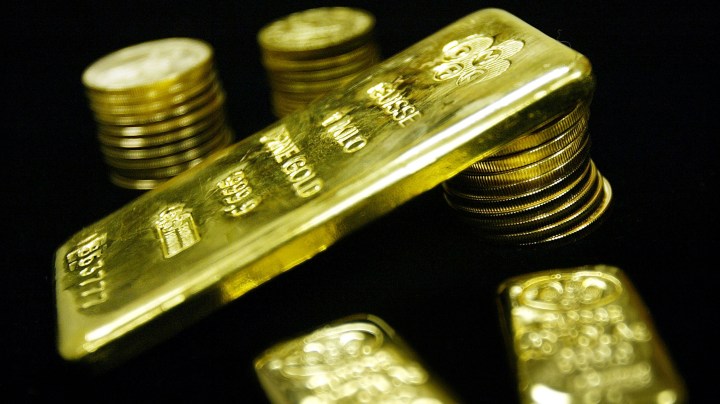
Trump Fed nominee advances in Senate despite support for gold standard
Trump Fed nominee advances in Senate despite support for gold standard

The Senate Banking Committee just voted to approve President Donald Trump’s two nominees to the Federal Reserve Board.
The committee voted 18 to 7 to approve the nomination of economist Chris Waller, the current executive vice president and head of research at the St. Louis Fed. The other nominee — economist Judy Shelton — was approved with a much thinner margin, 13 to 12 and along partisan lines, with all the Democrats on the committee voting against her nomination.
Shelton attracted opposition because of some views that she articulated, namely that the Fed should have closer ties to the administration.
Another opinion she has that is also controversial: She wants to return the U.S. to the gold standard, which we as a country abandoned nearly 50 years ago.
So, let’s explore why the gold standard is such a hot potato in the world of central banking.
Take a look at the $5 bill. Just below the seal of the U.S. Federal Reserve System next to Abe Lincoln’s head, it reads, “This note is legal tender for all debts, public and private.”
What it doesn’t say is: This piece of paper can be redeemed for $5 worth of gold held by the U.S. government.
Once upon a time, it could be. University of Oklahoma economist Gary Hoover can provide a short version of this monetary history:
“Initially, we actually printed gold coins,” he said.
But carrying around all those heavy coins was cumbersome, so in the mid-1800s the government decided to say, according to Hoover, “OK, let’s print out paper money, but they’ll be redeemable for certain amounts of gold.”
That gold standard backing every dollar in circulation lasted until the early 1900s, but then World War I and the Great Depression and World War II happened — the government needed to borrow a lot and print more money. By the early 1970s, President Richard Nixon had taken the U.S. totally off the gold standard.
“And now we simply have paper dollars, which are the good faith of the United States government,” Hoover said.
Now, Hoover and every other economist I talked to today dismissed out of hand the idea of the U.S. going back to the gold standard. They called it “nuts,” a “debunked idea,” “a mistake.”
But the appeal of returning to a fixed amount and value of precious metal anchoring the dollar isn’t hard to understand, said Scott Sumner at George Mason University’s Mercatus Center.
“Partly it’s frustration with the current monetary system,” he said.
In which 19 unelected governors of the Federal Reserve have the power to change interest rates, manipulate the money supply, buy or sell billions in assets — to speed up or slow down or otherwise steer the economy.
“Keeping the value of money strong, and in some sense removing the role of government from the monetary system, those are things that attract people to the gold standard,” Sumner said.
He added that in a complex, interconnected financial world, it would be like trying to rescue the economy — in a Great Recession or COVID-19 pandemic recession — with handcuffs on.
As for the current system, “the central bank — the Fed — can inject more dollars into the economy,” he said. “Under a gold standard, where dollars have to be backed [by] gold, there’s much less ability to do that. And then you get deflation and depression and so on if there’s not enough money in the economy.”
The gold standard also leaves the central bank without another tool to respond to an economic downturn, said David Wilcox, former director of research at the Fed: adjusting the value of the dollar to make U.S. exports more competitive.
“By putting those products on sale. And the way that happens is for its currency to depreciate, weaken in global financial markets.”
Which, he said, is a key to saving businesses and boosting employment in a downturn.
There’s a lot happening in the world. Through it all, Marketplace is here for you.
You rely on Marketplace to break down the world’s events and tell you how it affects you in a fact-based, approachable way. We rely on your financial support to keep making that possible.
Your donation today powers the independent journalism that you rely on. For just $5/month, you can help sustain Marketplace so we can keep reporting on the things that matter to you.











